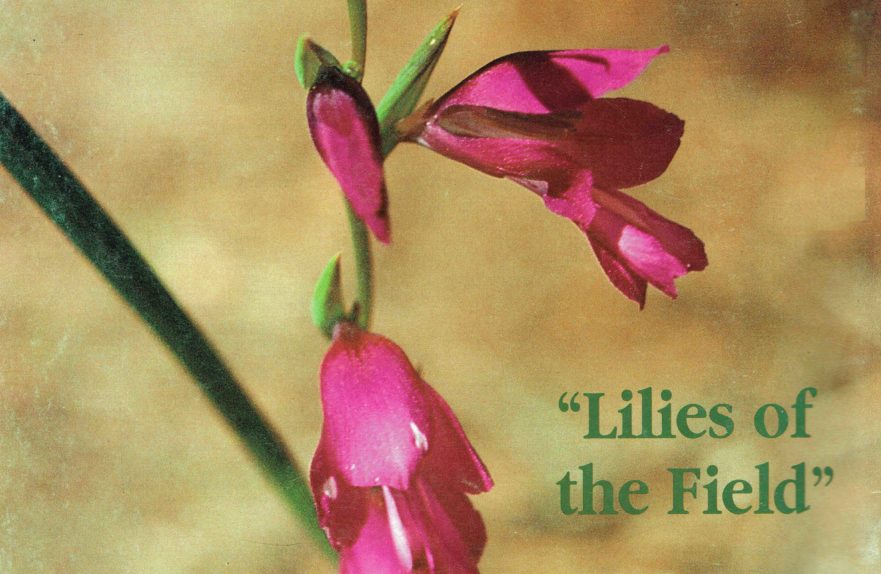How to cite this article: Gloria E. M. Suess, “Lilies of the Field,” Jerusalem Perspective 46/47 (1994): 18-23 [https://www.jerusalemperspective.com/1584/].
Did tall white lilies once grow in the fields and terraces of central Judea or near the northern shores of the Sea of Galilee? They don’t today, and that is why many believe that the “lilies of the field” in Matthew 6:28 and Luke 12:27 does not refer to the beautiful and now rare Madonna Lily, Lilium candidum.
This spectacular wildflower is found today in a few nooks and crannies in the high valleys of upper Western Galilee and Mt. Hermon, where it blooms in the month of May. Three to ten large snow-white blossoms are grouped along the top of a stem two to four feet tall. They remain open day and night; their heavy sweet scent increases in the darkness. The present-day “Easter lily” originated from this wild species and is forced into bloom for the holiday by hothouse methods.

Medieval Christian pilgrims to the Holy Land revered the Madonna Lily as a symbol of holiness and purity. Artists such as Titian, Lippi and Botticelli included it in paintings of the Virgin Mary. A seventeenth-century papal edict gave the lily official religious confirmation. It was sought and over-picked to near extinction.
Premium Members and Friends of JP must be signed in to view this content.
If you are not a Premium Member or Friend, please consider registering. Prices start at $5/month if paid annually, with other options for monthly and quarterly and more: Sign Up For Premium




![Gloria Suess [1932-2010]](https://www.jerusalemperspective.com/wp-content/uploads/userphoto/37.jpg)
